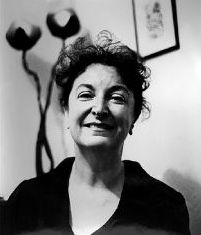 Here is an utterly charming essay on the film critic Pauline Kael, one of my heroes, by Sam Sacks in the arts and literature review Open Letters Monthly:
Here is an utterly charming essay on the film critic Pauline Kael, one of my heroes, by Sam Sacks in the arts and literature review Open Letters Monthly:
Kael forged her insights from the moment of viewing, and this naturally set her in opposition to academic and theory-based criticism. The problem with theory, she felt, is that it single-mindedly dictates the right and wrong ways to watch and respond to movies. One school of thought might esteem film for its unique montage quality, another for its trend toward realism – but in either case, adherents of each school are guaranteed to promote mediocre films that fit their theory while dismissing great work that doesn’t. For Kael, for whom the supreme artistic virtues were surprise and eclecticism, “There is only one rule: Astonish us! In all art we look and listen for what we have not experienced quite that way before. We want to see, to feel, to understand, to respond in a new way. Why should pedants be allowed to spoil the game?”
No one has ever been more brilliant or loving about the movies–she could perceive the film as a whole immediately, never just as mere parts, so her pleasure or satisfaction was an instinctual reaction to the integrity of a work, and she knew more intuitively than any critic I’ve read when something was fishy. Nor has any critic been more demanding of filmmakers and audiences; she wrote about movies, and the shared experience of watching them in the theater, as part of a social and moral reality in which pleasure and good faith were necessarily partners. (No sermonizing or political correctness for Kael.) Sacks hits all the right points (many people don’t) and he quotes some of my favorite passages from her reviews.
There are mentors who speak to us from the page, and, if we’re lucky enough, the ones who engage us in person and on the page. Another pleasure this week was reading this long, generous essay on the poet Susan Gillis, my friend and former teacher at John Abbott College in Montreal where she read my fledgling drafts and shared her own for two glorious years. Her work is luminous, stirring (I still learn from it)–you can read three new poems here and two older poems here.
On the Paris Review blog: an interview with Emily Fragos, who edited Everyman Edition’s pocket-sized volume of Emily Dickinson’s letters. Fragos talks about Dickinson’s lesser known letters, the ones she wrote as a girl and young woman, before she began corresponding with the editor Thomas Wentworth Higginson who published her poems after her death (the correspondence that begins with her famous question: “Are you too deeply occupied to say if my verse is alive?”):
You find a vivacious, brilliant, very witty young woman who had a multitude of friends, both men and women, whom she adored. She traveled, entertained, played music, and was a star at school. Everyone she wrote to already knew she was a gifted and unique individual. …We don’t see a recluse wearing all white, living apart from others, and penning mysterious poetry. We meet a loving, studying, working, tired, joyful, sometimes upset person who takes part in the running of a busy household and who is the caregiver, without respite, for her bedridden mother. We glimpse the personality traits that will deepen with the years, especially the intensity of her feelings.
If you love Dickinson’s letters to Higginson as much as I do, you might be interested in Brenda Wineapple’s dual biography of Emily Dickinson and Thomas Wentworth Higginson, called White Heat: The Friendship of Emily Dickinson and Thomas Wentworth Higginson.
This post may contain affiliate links.








